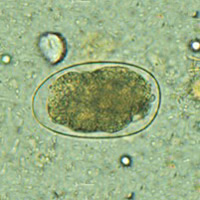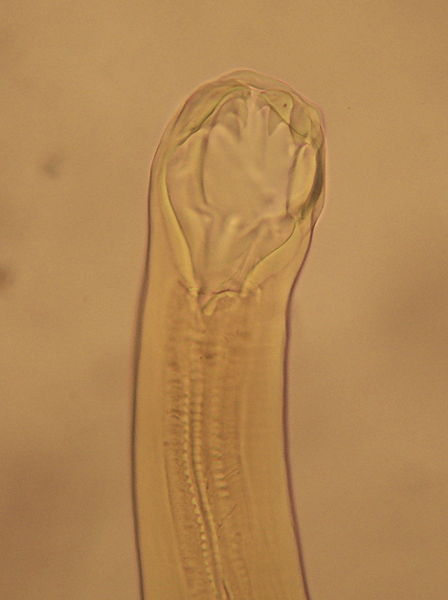Adaptations
Hookworms have developed many
adaptations that help them not only survive, but become more
efficient parasites.
-The eggs of the hookworm have developed a thin shell that
serves as protection. This shell allows them to not be harmed as
they travel through and out of the digestive tract.
-The hookworm larva have an adaptation that allow them to
located their host while living in the substrate. They have what
are called amphids; these are large paired sensilla on each side
of their mouth. These detect the host and allow the hookworms to
find, attach, and penetrate the host, in this case, humans.
-The juvenile and adult forms also have adaptations to help them
survive. They have developed two pairs of sharp teeth to allow
them to attach to the intestines of the host and eat the
intestinal mucus. These teeth also allow them to penetrate blood
vessels so they can feast on the blood. Along with the t eeth,
the hookworms have a natural anticoagulant secretion that keeps
the blood from clotting and allows them to eat longer. Hookworms
also possess a hydrostatic skeleton which allow them to more
easily move through the substrate and the hosts circulatory and
digestive system.
eeth,
the hookworms have a natural anticoagulant secretion that keeps
the blood from clotting and allows them to eat longer. Hookworms
also possess a hydrostatic skeleton which allow them to more
easily move through the substrate and the hosts circulatory and
digestive system.